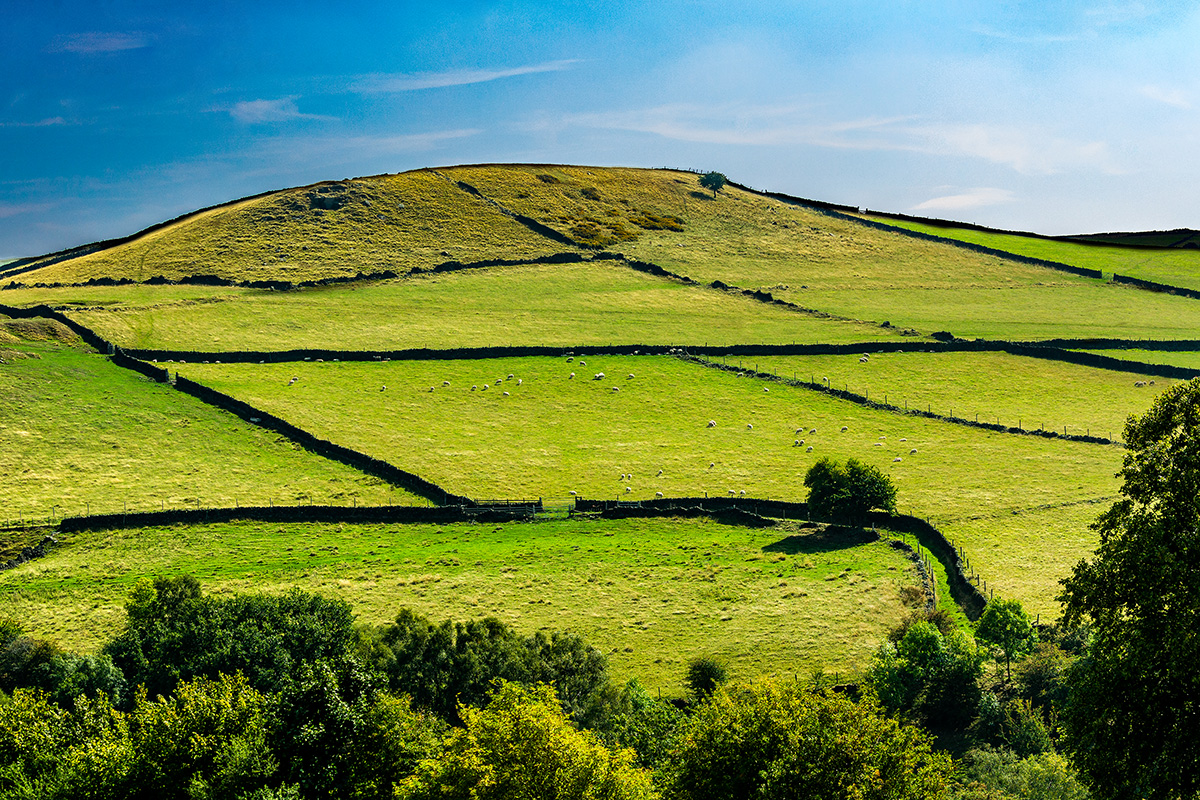My documentary film If Walls Could Talk is about centuries-old dry-stone walls in Derbyshire, England, what secrets they contain, how they were built, and what future they hold. The film showcases miles of dry-stone walls in the English countryside landscape and explores how these age- and weather-beaten walls communicate their hidden tales to present-day wallers, countryside lovers, and nature enthusiasts.
Building walls is an antique art that has endured for thousands of years. Extant dry-stone walls, built without the use of mortar or any binding agent, can be dated as far back as 3500 BCE. In the UK, the Celts developed boundary walls or field walls as they transitioned from nomadic pastoralism to settled farming. Farmers built stock-proof walls to confine their livestock. They reformed natural rocky outcrops into useful barriers. They used stone to create irregular systems of dikes and ditches.
In Derbyshire, the Romans—who would have used enslaved labor—built walls that followed the road system. The first Enclosures Act of 1604 further ensured that farmers enclosed their land with sturdy walls. In the mid-1700s, fleeing the famine in Ireland, unemployed Irish Navvies (manual laborers) brought their own style of walling.

The Navvies worked for homesteads or wealthy landowners who were obsessed with cultivating and clearing the land of what they saw as rubble stone. This material was a far cry from the stones that had been quarried, but it was a great material for building walls to enclose animal and for the creation of boundary walls.
Building stone walls is difficult work, and it was often accompanied by songs to help endure the labor and keep spirits high. One contemporary waller and singer is Dave Goulder, originally from Derbyshire, whose original composition “These Dry Stone Walls” is featured in the film:
In Cumberland they built them,
On hills that surely must have killed them,
Through broom and juniper and stunted ling,
Two thousand feet over,
With just a tarpaulin cover,
They crouched in wind and rain and waited for the spring.
Trailer: If Walls Could Talk by Roland Keates. View the full film.
Contemporary dry-stone wallers have advanced since their eighteenth-century counterparts, yet they all have one thing in common: “heads down, bums in air.” Today’s wallers typically fit into one of two categories: those who were born on a farm and learned the skill from parents or grandparents, and those who changed careers and took a dry-stone walling course. Whichever path they take, they share a passion for building and love the transformation of stone in their hands.
Dry-stone wallers come in all shapes, sizes, ages, and sexes. They regard their profession as not just a job but a way to find pleasure in working with nature and its elements. Sally Hodgson, who started walling in 1989 after a career in textile design in London, is the only woman dry-stone waller in Derbyshire to become a master craftsperson. She sees dry-stone walling as grounding and therapeutic. Even after twenty-eight years, she has to pinch herself in the morning to make sure she isn’t dreaming doing a job she loves so much.
Some common characteristics I found among dry-stone wallers are their sunny disposition, physical fitness, and immense pride in what they do. In the film, Richard Hathaway describes how “walls are things of beauty.” He talks about how quickly the day goes when he is walling in the countryside with only his radio as company.
The camaraderie and support system among dry-stone wallers of Derbyshire is readily apparent. Each has a story to tell, as well as unusual finds to share, including old clay smoking pipes discarded by the Navvies, leather shoes, grenades, and assorted fossils.




A 2002 report by the Agricultural Development and Advisory service (ADAS), the UK’s largest independent agricultural, environmental, and rural development consultancy provider, highlighted the threat to landscape heritage if dry-stone walls are not maintained. Lack of funding, falling farm incomes, and skill shortages have led to a decline in the condition of dry-stone walls throughout the UK, affecting both their practical and aesthetic value.
For this tradition to survive, we need greater awareness and education about its preservation and conservation, such as the introduction of apprenticeship schemes for a new generation of wallers. One such effort is Walls for the Future, training provider based in Derbyshire, formed by three professional master wallers: Trevor Wragg, Sally Hodgson, and Gordon Wilton. They strive to impart their knowledge and skills to the next generation, while also encouraging young people to value the importance of dry-stone walls for the benefit of wildlife, livestock, botanical life, and cultural heritage.
This documentary film emerged not only from a love of the countryside and the heritage of wallers, but also to encourage younger generations to maintain the craft of dry-stone walling. My hope is that viewers will learn to appreciate the history and beauty of these walls and not take them for granted.
If only walls could talk…

Roland Keates is a portrait and landscape photographer who first became interested in dry-stone walls while studying commercial photography at Derby University six years ago. A book to accompany his film, If Walls Could Talk, should be published in 2019.


